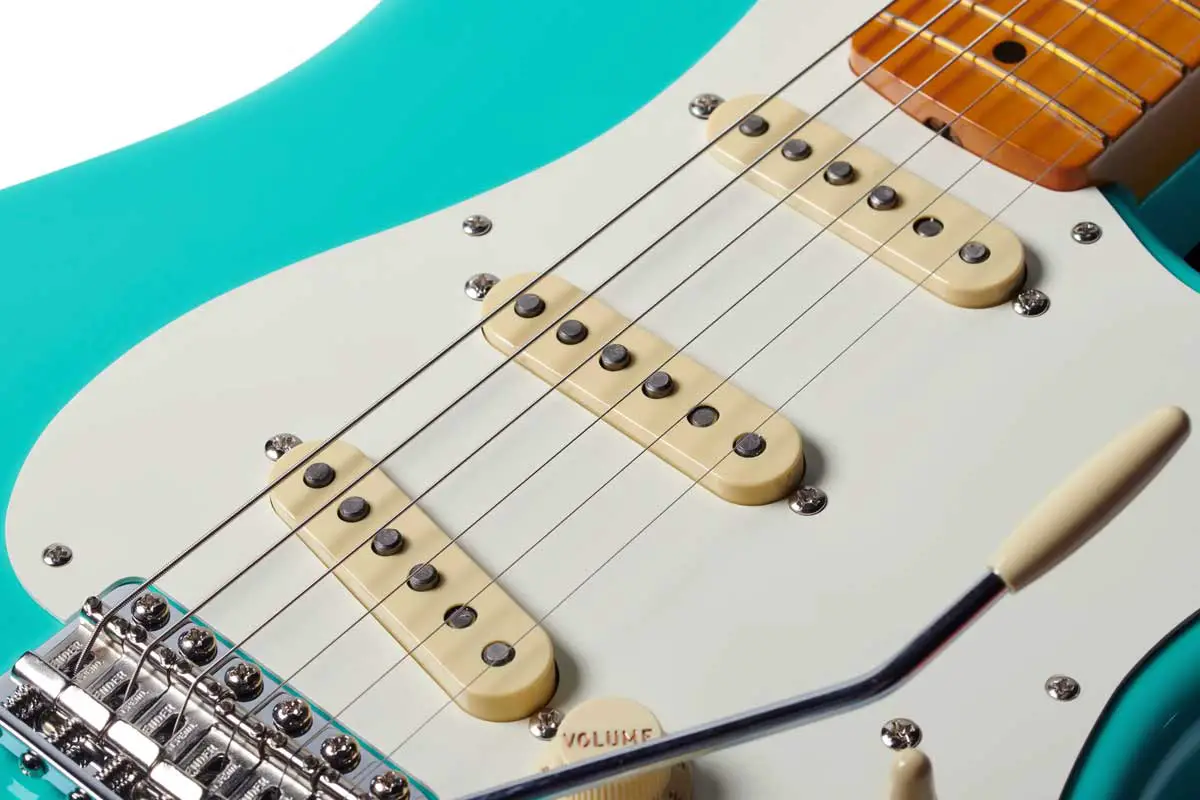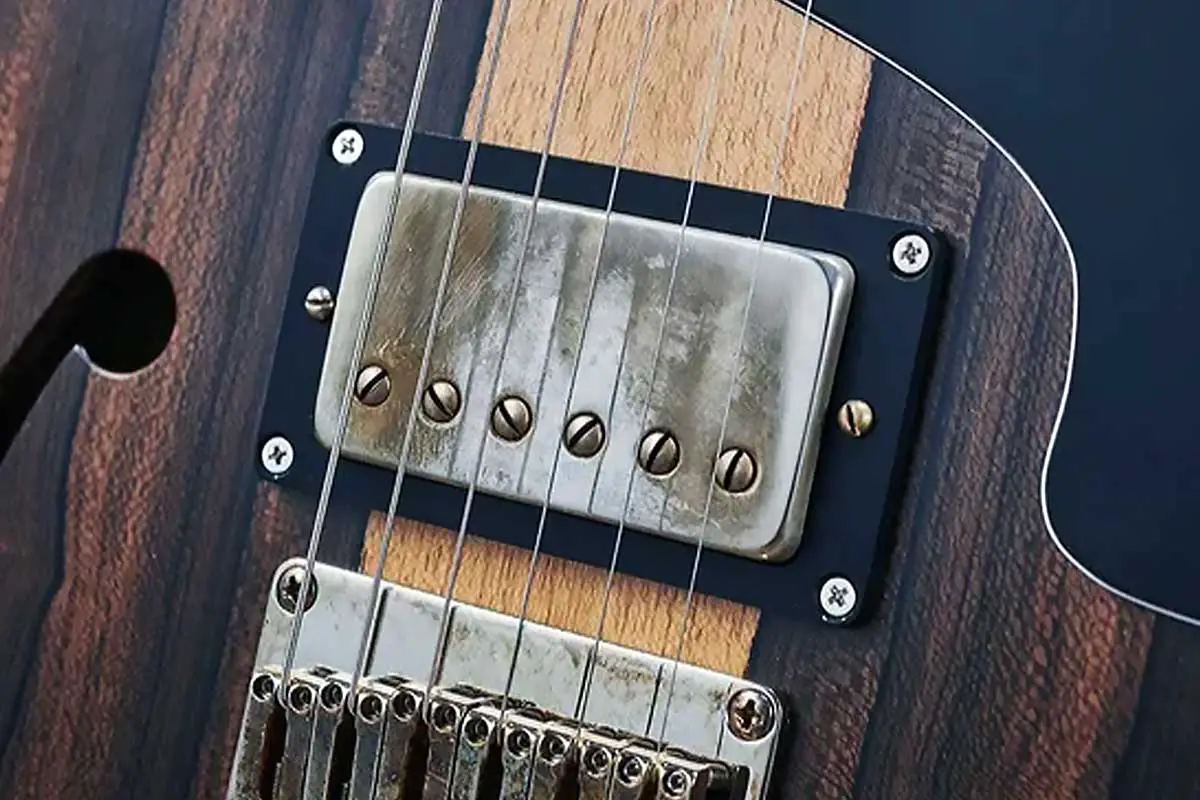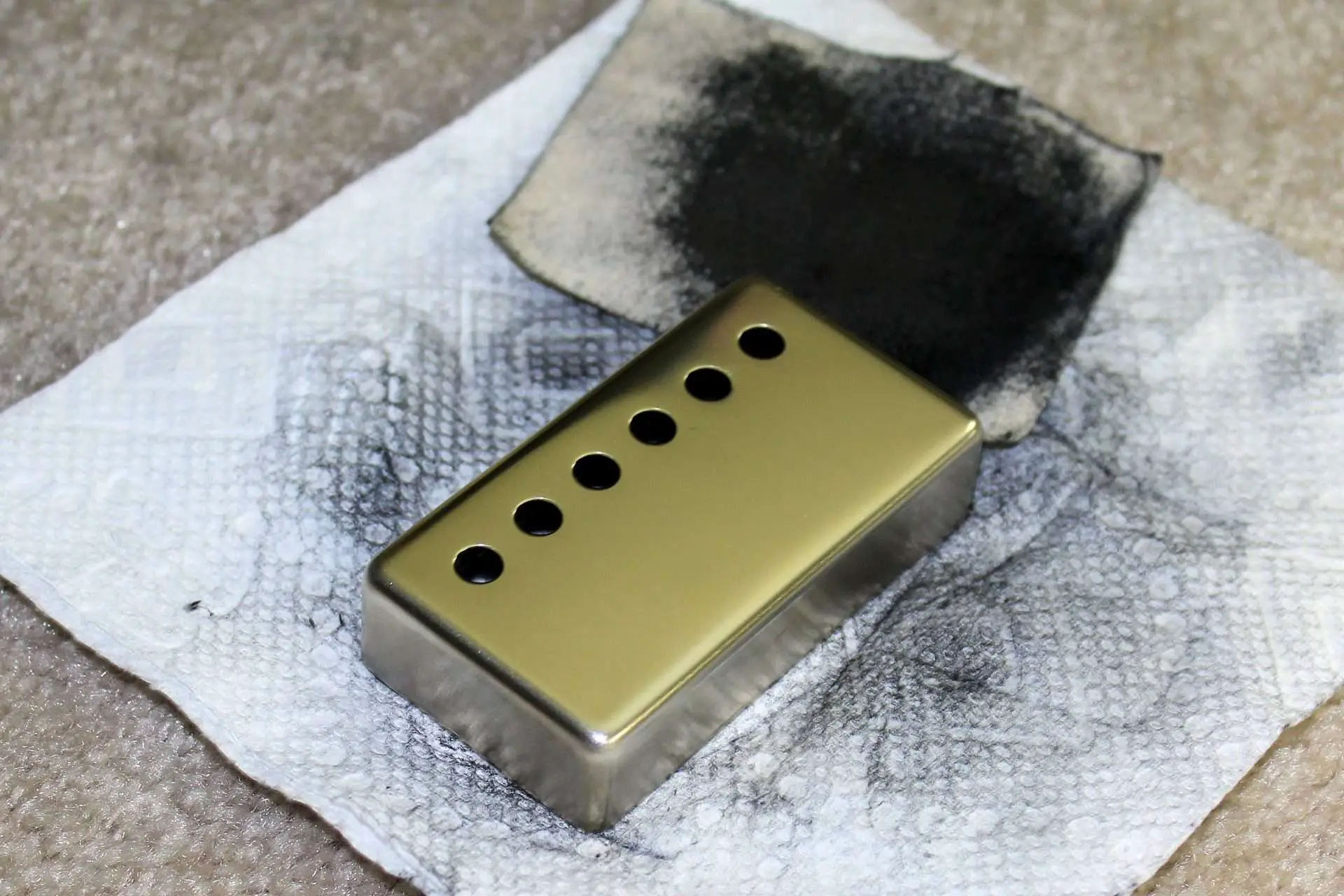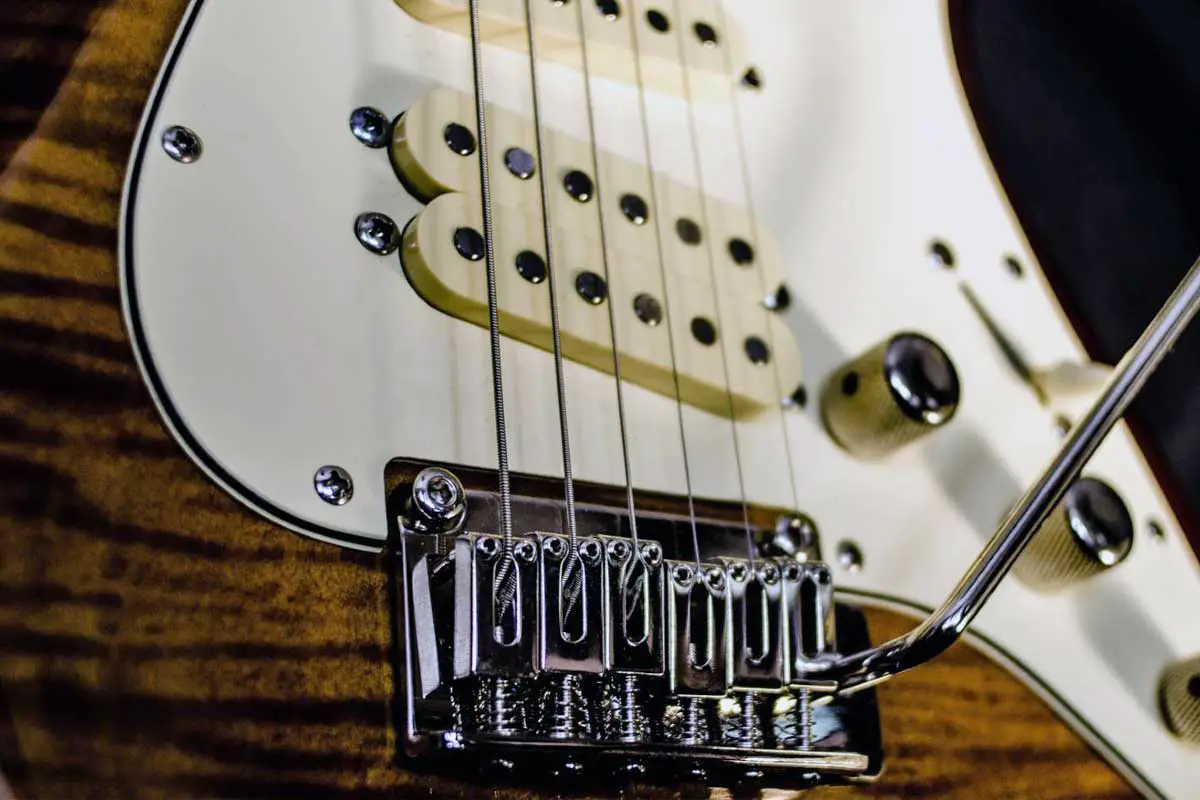Learning how to clean guitar pickups is an essential part of maintaining your instrument. Over time, dust and grime can accumulate on the pickups, creating oxidation & potentially affecting your guitar’s sound. Regular cleaning ensures that your pickups are functioning optimally, which is crucial for a clear, crisp output. It’s a simple process that can have a significant impact on preserving the natural tone of your guitar.
When approaching this task, the type of pickups on your guitar dictates the cleaning method. Whether you’re dealing with single-coils or humbuckers, the goal is to remove any foreign particles or corrosion that could interfere with the magnetic field of the pickups. A gentle touch and the right materials can help you maintain the integrity of your pickups without causing damage.
Understanding the structure and function of electric guitar pickups will guide you in effectively cleaning them. This knowledge, combined with a few household items or specialized tools, will enable you to keep your guitar sounding its best. It’s a straightforward precaution that can prevent issues and ensure the longevity and performance of your beloved instrument.

Understanding Guitar Pickups
Guitar pickups are integral to the function of an electric guitar, but before you consider cleaning them, it’s crucial to understand their role and construction. Essentially, pickups are comprised of magnets and coils that capture the vibrations of the guitar strings and convert them into electrical signals, which can then be amplified.
Components of a Guitar Pickup:
- Magnet(s): These can be one or several, creating a magnetic field.
- Coils: Wound copper wire that induces an electrical current when string vibrations disrupt the magnetic field.
- Pole Pieces: Individual magnets under each string to tailor the pickup’s sensitivity to each string’s vibration.
When you play your electric guitar, the vibrations of the metal strings within the magnetic field of the pickups generate an electrical current in the coils. This current mirrors the vibrations‘ frequency and amplitude, creating the electrical signal that reflects the sound produced by the strings.
The pickup’s configuration directly affects the performance of your electric guitar, with variations in the number of coils (single-coil or humbucker, for instance) and the magnet type (like Alnico or ceramic) contributing to the distinct sound characteristics of your instrument.
For optimal performance, keeping your guitar pickups clean is essential. Any accumulation of dust or debris can impact the quality of sound. So, understanding their functionality will help you maintain them properly and ensure they translate your performance accurately and cleanly.
Preparing Pickups for Cleaning
Proper guitar maintenance is essential for keeping your instrument in top condition. Before starting the cleaning process, it’s critical to gather the appropriate tools, disassemble parts carefully, and understand safety precautions to avoid any damage.

Gathering Necessary Tools
You will need a variety of tools to clean your guitar pickups effectively. Ensure that you have a dry cloth, soft cloth, or microfiber cloth for wiping down surfaces gently. For the nooks and crevices, a cotton swab may be helpful. You’ll also need a cleaning solution safe for electronics—often, a little bit of naphtha serves well as a solvent to remove grime without causing harm. To blow away dust without introducing moisture, have a can of compressed air at hand.
Disassembling the Guitar
Prior to cleaning, remove the strings from your guitar to access the pickups easily. This can often be done by loosening the strings and carefully removing them from the tuning pegs. If your pickups have covers, you may need a flathead screwdriver to remove them. Put pieces on a clean surface and use masking tape to hold tiny screws or components in place if necessary.
Safety Precautions
While cleaning, be gentle to avoid scratching or damaging the pickups. Always use solvents sparingly to prevent any moisture damage. It’s important to ensure your work area is well-ventilated and free from excessive humidity which can cause corrosion. If using naphtha or any other solvent, wear protective gloves and work in an area away from open flames or heat sources.
Step-by-Step Cleaning Process
Maintaining your guitar pickups is crucial for preserving sound quality. This step-by-step guide will demonstrate how to effectively clean the pickup surface to remove any accumulated dust, dirt, and grime, address rust and corrosion, and care for the electrical components to ensure optimal performance.
Cleaning the Pickup Surface
Begin the cleaning process by delicately wiping the pickup surface with a dry, microfiber cloth to eliminate surface dust and debris. For finer particles lodged between the magnetic poles, use a soft-bristled brush. If necessary, lightly dampen the cloth with naphtha or a vinegar solution to remove stubborn grime, but avoid letting moisture seep into the pickups.
Removing Rust and Corrosion
In case of any visible rust and corrosion, gently rub the affected areas with fine-grade steel wool or a mixture of baking soda and white vinegar applied with a soft cloth; this non-abrasive method helps in rust removal while preserving the metal’s integrity. For heavier corrosion, a small amount of penetrating oil can be utilized, but ensure that no residue is left behind that could impact the electrical components.

Caring for Electrical Components
Electrical components demand careful maintenance to prevent damage to the electrical signal. Clean around the copper wire and magnetic poles with care, avoiding any abrasive materials that could scratch or damage them. After cleaning, always give the components a final wipe with a dry cloth to eliminate any remnants of naphtha, WD-40, or rubbing alcohol used during the process. This ensures that no conductive residue interferes with your guitar’s sound.
Reassembling and Tuning the Guitar
After cleaning your guitar pickups, the next crucial steps are reassembling the guitar and ensuring it is tuned for optimal sound quality. Proper reassembly and tuning not only maintain the performance of your electric guitar but also extend the life of your strings and other components.

Attaching the Strings and Pickups
When reattaching the strings, ensure that they are correctly aligned and seated in the bridge and the nut. Begin by threading each string through the tailpiece, then over the bridge saddles, up the neck, through the nut, and finally into the tuning pegs. Secure and tighten the strings while making certain the winds are neat on the pegs to promote stable tuning.
For pickups, once replaced, you should reconnect any wiring harness or solder connections according to your guitar’s schematic. This maintains the clarity and quality of the signals produced by the strings’ vibrations over the magnetic poles of the pickups.
Setting the Pickup Height
The distance between your strings and the pickups, known as pickup height, can drastically affect tone and output. Measure the gap when the string is pressed at the last fret — for the high-E string, around 1/16″ is a good starting point, while the low-E string can be slightly higher due to its increased vibration. Adjust the pickup height by turning the screws at the sides of the pickup, checking the balance between volume and tone clarity.
Related: How to set guitar string height
Tuning for Sound Quality
Finally, tune your guitar to standard tuning (EADGBE) using a reliable tuner for accuracy. Each string should be tuned so that the vibration is clear and free of any buzzing, ensuring that the tone quality is consistent across the fretboard. Routine tuning is a vital part of guitar maintenance, not only for sound quality but also for the health of your instrument, promoting optimal performance over time.
Ongoing Maintenance and Care
Maintaining your guitar pickups is essential to ensure optimal tone and performance. You don’t need to find the task daunting; with regular care, you can keep your pickups in top shape.
Regular Wiping: Always use a dry cloth to gently wipe the pickups clean. This removes grunge and sweat that can accumulate from regular playing.
Avoid Moisture: Be sure to keep your guitar in an environment with stable humidity. Too much moisture can lead to corrosion, affecting both tone and the longevity of the pickups.
Handling Buildup: Over time, you may notice a buildup on the surface of the pickups. In such cases, lightly dampen your cloth with a bit of rubbing alcohol to clean them. Remember to dry the pickups immediately afterward to prevent any moisture-related damage.
Periodic Inspections: Every few months, take a moment to inspect your pickups for any signs of corrosion or wear. Catching issues early can prevent more significant problems down the line.
By incorporating these simple steps into your guitar maintenance routine, you can prevent corrosion and maintain your guitar’s pristine condition without it becoming an overwhelming chore. Proper care ensures that your guitar will continue to sound its best, letting you focus on making music rather than worrying about your equipment.
Other Guitar Maintenance Articles
| Component | Related Articles |
|---|---|
| Body Finish | How to clean your guitar’s body |
| Bridge & Tailpiece | How to clean a guitar bridge |
| Fingerboard | How to clean your fretboard |
| Frets | How to clean your guitar frets |
| Pickups | How to clean pickups |
| Pots | How to clean guitar potentiometers |
| Strings | How to clean guitar strings |
| Tuners | How to clean guitar tuners |
Frequently Asked Questions
Properly cleaning guitar pickups extends their life and maintains sound quality. This section answers common queries about the care of chrome pickups, use of polish, rust removal, and more.
What is the best way to clean chrome guitar pickups?
To clean chrome guitar pickups, gently wipe them with a soft, dry cloth. If necessary, slightly dampen the cloth with distilled water and add a dab of liquid polish to remove oxidation & make them shine—avoid overly abrasive materials to prevent scratches.
Can you use guitar polish on pickup covers?
Yes guitar polish can be used on pickup covers. If you have heavy corrosion, you can try something a bit heavier duty like automotive polish which is slightly more abrasive without scratching the material.
What should I use to clean my guitar fretboard and pickups?
Use a soft cloth with lemon oil for the fretboard, and for pickups, a dry cloth suffices. Ensure no liquid enters the pickups as it can cause damage.
How can you remove rust from guitar pickups safely?
To safely remove rust from guitar pickups, use a fine-grade steel wool (#0000). Lightly rub the affected area, avoiding any harsh contact with the pickup coils.
Is it safe to clean guitar pickups with WD40?
Avoid using WD40, which is primarily intended to be a lubricant, on guitar pickups. It’s not intended for electronic components and can potentially harm the wiring and magnets inside the pickups.
What steps should I take for regular guitar pickup maintenance?
Regular maintenance includes dusting with a soft cloth, checking for loose wires or screws, and avoiding moisture. Treat your guitar pickup handbook as a guide for detailed care instructions.
